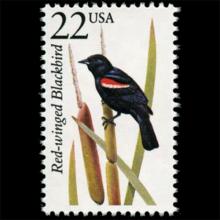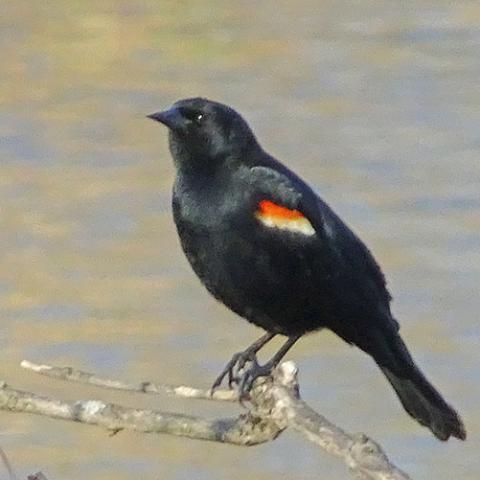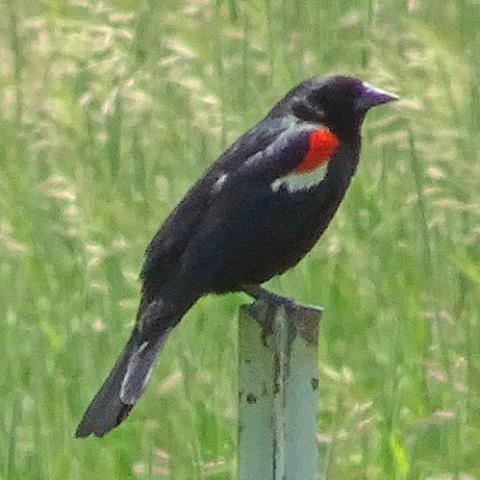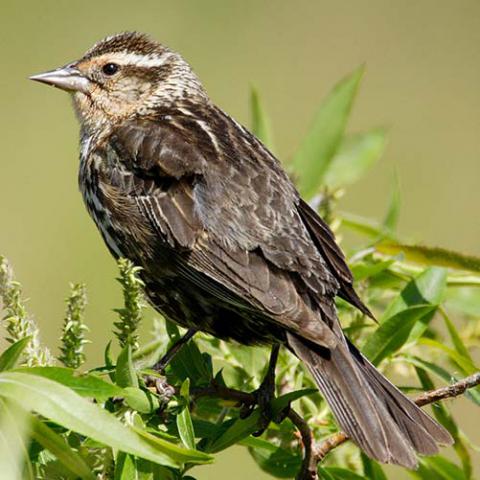NAMES
TAXONOMY
United States
Issued:
Stamp:
Agelaius phoeniceus
United States
Issued:
Stamp:
Agelaius phoeniceus
United States
Issued:
Stamp:
Agelaius phoeniceus
Genus species (Animalia): Agelaius phoeniceus
The red-winged blackbird (Agelaius phoeniceus) is a passerine bird of the family Icteridae found in most of North America and much of Central America. It breeds from Alaska and Newfoundland south to Florida, the Gulf of Mexico, Mexico, and Guatemala, with isolated populations in western El Salvador, northwestern Honduras, and northwestern Costa Rica. It may winter as far north as Pennsylvania and British Columbia, but northern populations are generally migratory, moving south to Mexico and the southern United States. Claims have been made that it is the most abundant living land bird in North America, as bird-counting censuses of wintering red-winged blackbirds sometimes show that loose flocks can number in excess of a million birds per flock and the full number of breeding pairs across North and Central America may exceed 250 million in peak years. It also ranks among the best-studied wild bird species in the world. The red-winged blackbird is sexually dimorphic; the male is all black with a red shoulder and yellow wing bar, while the female is a nondescript dark brown. Seeds and insects make up the bulk of the red-winged blackbird's diet.
Taxonomy
The red-winged blackbird is one of five species in the genus Agelaius and is included in the family Icteridae, which is made up of passerine birds found in North and South America. The red-winged blackbird was formally described as Oriolus phoeniceus by Carl Linnaeus in 1766 in the twelfth edition of his Systema Naturae, but was later moved with the other American blackbirds to the genus Agelaius by Louis Jean Pierre Vieillot in 1816. Linnaeus specified the type location as "America" but this was restricted to Charleston, South Carolina in 1928. The genus name is derived from Ancient Greek agelaios, meaning "gregarious". The specific epithet, phoeniceus, is Latin meaning "crimson" or "red". The red-winged blackbird is a sister species to the red-shouldered blackbird (Agelaius assimilis) that is endemic to Cuba. These two species are together sister to the tricolored blackbird (Agelaius tricolor) that is found on the Pacific coast region of the California and upper Baja California in Mexico.
Depending on the authority, between 20 and 24 subspecies are recognized which are mostly quite similar in appearance. However, there are two isolated populations of bicolored blackbirds that are quite distinctive: A. p. californicus of California and A. p. gubernator of central Mexico. The taxonomy and relationships between these two populations and with red-winged blackbirds is still unclear. Despite the similarities in most forms of the red-winged blackbird, in the subspecies of Mexican Plateau, A. p. gubernator, the female's veining is greatly reduced and restricted to the throat; the rest of the plumage is very dark brown, and also in a different family from the European redwing and the Old World common blackbird, which are thrushes (Turdidae). In the California subspecies, A. p. californicus and A. p. mailliardorum, the veining of the female specimens also covers a smaller surface and the plumage is dark brown, although not in the gubernator grade; and also its superciliary list is absent or poorly developed. The male subspecies mailliardorum, californicus, aciculatus, neutralis, and gubernator lack the yellow band on the wing that is present in most male members of the other subspecies. The red-shouldered blackbird was formerly considered as a subspecies of red-winged blackbird. They were split by the American Ornithologists' Union in 1997.




